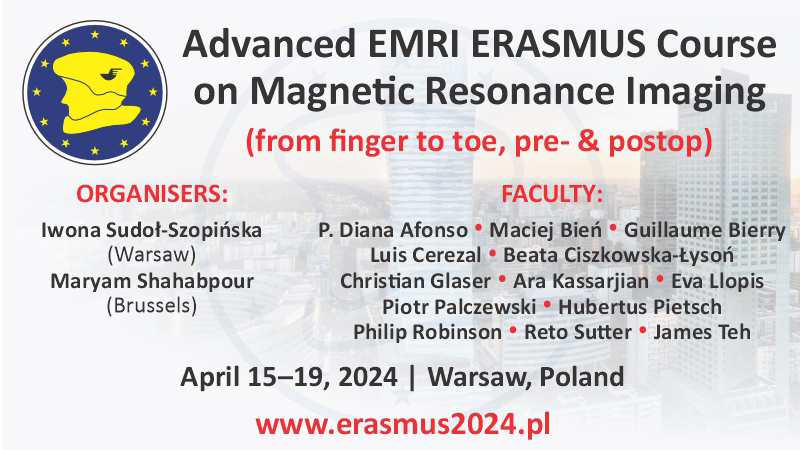Ultrasound assessment on selected peripheral nerve pathologies. Part I: Entrapment neuropathies of the upper limb – excluding carpal tunnel syndrome
Berta Kowalska1, Iwona Sudoł‑Szopińska2
 Affiliation and address for correspondence
Affiliation and address for correspondenceUltrasound (US) is one of the methods for imaging entrapment neuropathies, post-traumatic changes to nerves, nerve tumors and postoperative complications to nerves. This type of examination is becoming more and more popular, not only for economic reasons, but also due to its value in making accurate diagnosis. It provides a very precise assessment of peripheral nerve trunk pathology – both in terms of morphology and localization. During examination there are several options available to the specialist: the making of a dynamic assessment, observation of pain radiation through the application of precise palpation and the comparison of resultant images with the contra lateral limb. Entrapment neuropathies of the upper limb are discussed in this study, with the omission of median nerve neuropathy at the level of the carpal canal, as extensive literature on this subject exists. The following pathologies are presented: pronator teres muscle syndrome, anterior interosseus nerve neuropathy, ulnar nerve groove syndrome and cubital tunnel syndrome, Guyon’s canal syndrome, radial nerve neuropathy, posterior interosseous nerve neuropathy, Wartenberg’s disease, suprascapular nerve neuropathy and thoracic outlet syndrome. Peripheral nerve examination technique has been presented in previous articles presenting information about peripheral nerve anatomy [Journal of Ultrasonography 2012; 12 (49): 120–163 – Normal and sonographic anatomy of selected peripheral nerves. Part I: Sonohistology and general principles of examination, following the example of the median nerve; Part II: Peripheral nerves of the upper limb; Part III: Peripheral nerves of the lower limb]. In this article potential compression sites of particular nerves are discussed, taking into account pathomechanisms of damage, including predisposing anatomical variants (accessory muscles). The parameters of ultrasound assessment have been established – echogenicity and echostructure, thickness (edema and related increase in the cross sectional area of the nerve trunk), vascularization and the reciprocal relationship with adjacent tissue.






